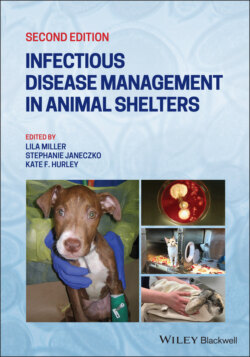Читать книгу Infectious Disease Management in Animal Shelters - Группа авторов - Страница 125
4.6 Standard Operating Procedures 4.6.1 Protocol Development and Staff Training
ОглавлениеThe definitive diagnosis of a disease is legally defined as the practice of veterinary medicine in many jurisdictions and should be performed only by veterinarians or under direct veterinary supervision. However, the establishment of SOPs, including diagnostic testing protocols, is not only a best practice for animal shelters but is also an essential component of meeting industry guidelines for shelter animal care. Such protocols must be written, detailed, current, accessible to staff and volunteers and should be developed with veterinary input. Protocols should define common illnesses, offer initial management steps, and detail the expected course of disease and response to treatment (Newbury et al. 2010). Protocols that pertain to disease diagnosis should describe the indications for diagnostic testing, the performance of common diagnostic tests, recognition and response to adverse treatment effects, and discuss the documentation of testing procedures (Association of Shelter Veterinarians 2014). Though diagnostic testing protocols should be veterinary‐directed, it is important that staff and volunteers are included in their development to ensure understanding and assess feasibility (Steneroden 2004).
Once protocols are established and written, staff must be trained on their implementation. Training techniques should be targeted toward the desired outcome which, in the case of diagnostic testing, is typically the performance of new skills. Therefore, performance and competency‐based strategies should be utilized and generally include: a verbal and written description of the skill to be acquired, demonstration of the target skill, practice of the target skill, performance feedback, and repetition until mastery. Mastery of the skill in a simulated learning environment should be followed by training in an actual work scenario (Parsons et al. 2012). Training should be continuous to ensure the maintenance of skills, account for the turnover of shelter staff and volunteers as well as changes in standard procedures and should involve periodic observation of staff to ensure adherence to established protocols (Steneroden 2004).
